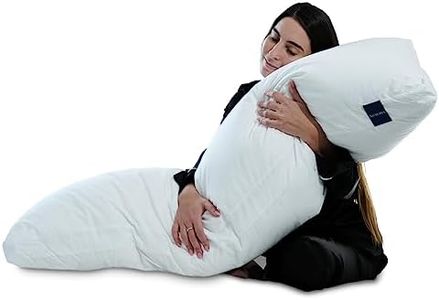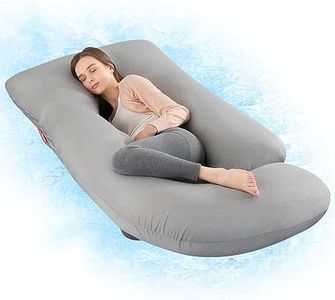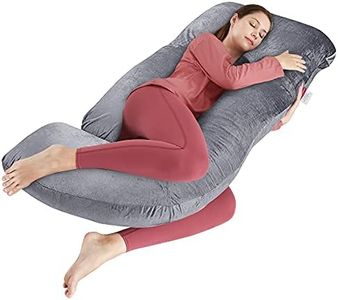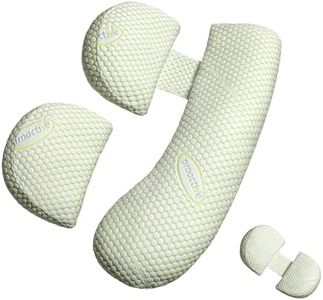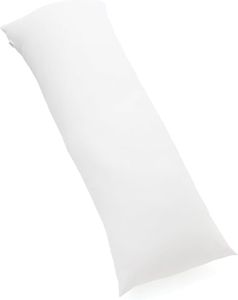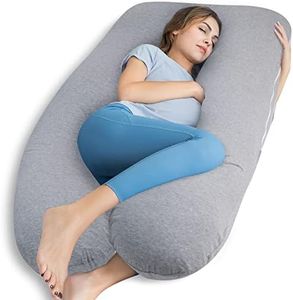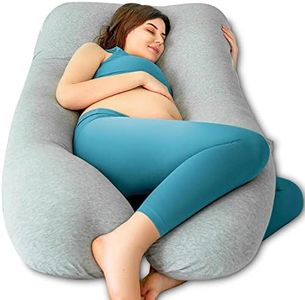We Use CookiesWe use cookies to enhance the security, performance,
functionality and for analytical and promotional activities. By continuing to browse this site you
are agreeing to our privacy policy
10 Best Body Pillow
From leading brands and best sellers available on the web.Buying Guide for the Best Body Pillow
Choosing a body pillow can make a big difference in your comfort and sleep quality. Whether you’re looking for support during pregnancy, managing pain, or just want to snuggle up at night, picking the right body pillow comes down to understanding what shape, size, and material will work best for you. Instead of going for the fanciest or biggest option, it’s important to think about your sleeping habits, body size, and any special needs you have. Being informed about the main features can help you select a pillow that really fits your nightly routine.ShapeThe shape of a body pillow is one of the first things to consider because it affects how the pillow supports your body and fits in your bed. Common shapes include straight (rectangular), C-shaped, and U-shaped. Straight pillows are versatile and easy to fit under or alongside your body—great if you like to hug or position the pillow as you wish. C-shaped pillows curve to provide support around your body, ideal for those who need side or back support, while U-shaped pillows wrap fully around, offering support on both sides which is useful if you toss and turn or need extra support for your back and belly at once. Think about your most comfortable sleeping position and whether you need whole-body support or more targeted comfort to guide your decision.
SizeBody pillows come in various lengths and thicknesses. Standard sizes range from about 48 to 60 inches long, but some are longer or shorter. The right size depends on your height and how much space you have in bed. Taller people or those who want support from head to knees may prefer a longer pillow, while a shorter style might be easier to move and more suitable for smaller beds. If you share your bed, consider how much room the pillow will take up and how easy it will be to position it without crowding your sleeping partner.
Filling MaterialThe filling inside a body pillow determines its firmness, feel, and maintenance. Common fillings include polyester fibers (soft and hypoallergenic), memory foam (molds to your body for more tailored support), and natural materials like down or cotton. Softer fills offer more squishiness and are cozier for hugging, but they might flatten out faster. Memory foam provides firmer, contoured support, which can be better if you need to relieve pressure on joints, but it may feel warmer or heavier. Consider whether you prefer something fluffy and flexible, or if you want steady support, especially if you have specific aches or pains to address.
Cover MaterialThe cover of a body pillow not only affects comfort but also impacts temperature and ease of cleaning. Popular cover materials include cotton (breathable and soft), microfiber (smooth and durable), or bamboo-based fabrics (moisture-wicking). If you tend to get warm at night or have sensitive skin, a breathable cover like cotton or bamboo might be best. Some covers are removable and machine-washable, which is important if you want to keep the pillow fresh or manage allergies, so always check for easy care options.
Support Level/FirmnessSupport level or firmness refers to how much resistance or give the pillow has when you lie on it. Softer pillows are great for hugging and provide gentle support, which is nice if you just want comfort, while firmer pillows offer more structure to keep your hips, spine, or legs in alignment throughout the night—especially important for side sleepers or pregnant individuals. Think about whether you need the pillow to mainly provide cozy comfort or if you need it to actually support parts of your body in a particular position.
